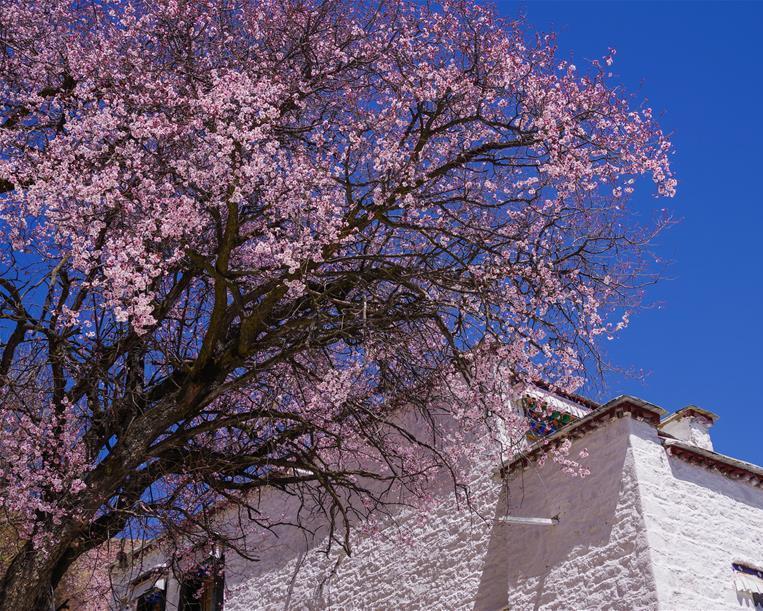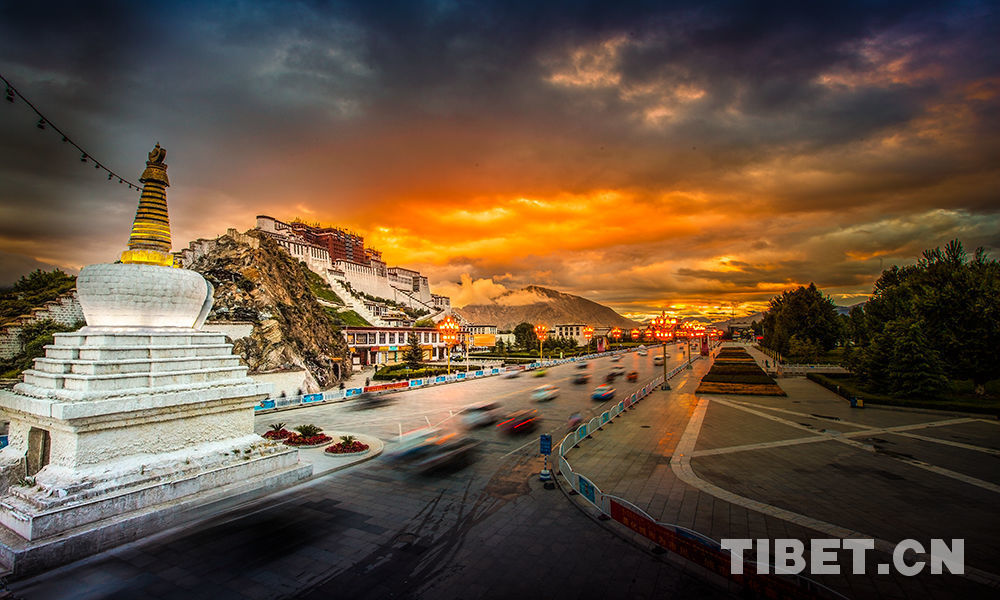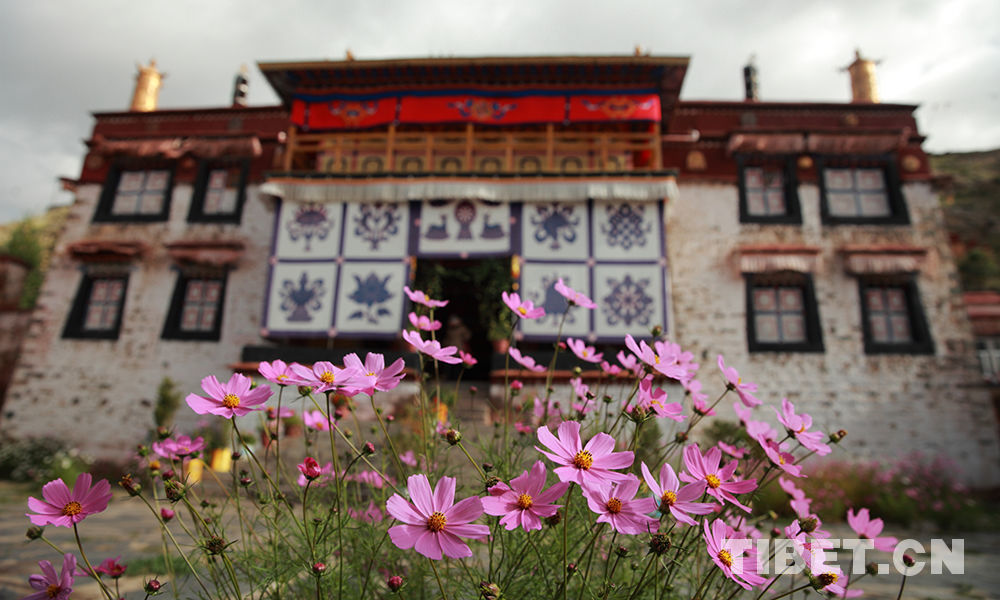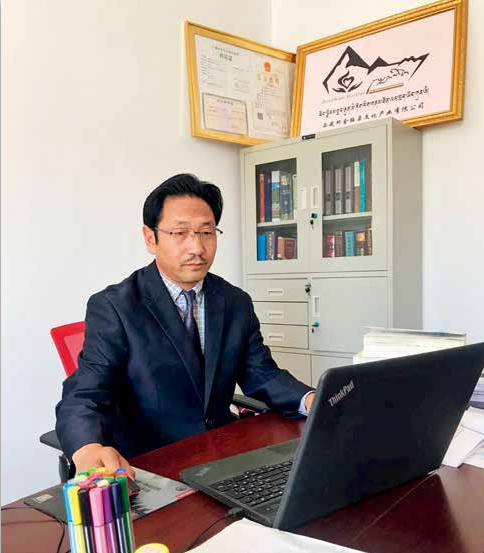Confusing version: 'environmental damage in Tibet'
Lobsang Sangay, Kalon Tripa of the so-called "Tibetan government-in-exile" and the 14th Dalai Lama both adopted the same wording of "environmental damage in Tibet" in their statements.
"China damages Tibet's environment," said Lobsang Sangay to German media when he was elected Kalon Tripa of the so-called "Tibetan government-in-exile".
This March, the 14th Dalai Lama also alleged that China recklessly damaged the ecological environment on the Tibetan Plateau, quickly causing damage to the neighboring countries, such as “China” and India.
Although the two "leaders" have different backgrounds and social statuses, they take the same stand in defaming China and demonizing Tibet.
Obviously, their statements didn't tell the real Tibet but reflected the same version of the Dalai Lama clique, namely "environmental damage in Tibet".
The writer who goes to Tibet every year pays much attention to Tibet's basic conditions and changes. He is at least more familiar with Tibet than those who left Tibet over 50 years ago and those who have never been to Tibet.
In light of their false statements, the writer thinks it necessary to introduce something about Tibet here.
In Tibet, visitors will see the blue sky, white clouds, clear water, flocks of wide ducks, the tranquil Namtso Lake, etc. In a word, Tibet boasts beautiful natural landscapes, making man feel in great nature. This is probably one of the charms of Tibet.
It's reported that Lhasa has recorded superior air quality in over 98% of the days during the past five years. And a survey made by national departments concerned also showed that most of the areas in Tibet remain in primordial conditions, one of the regions with the best natural environment in the world.
It was absolutely impossible to discuss the objective law of the ecological environment of Tibet, nor to talk about ecological improvement and environmental protection.
The Peaceful Liberation of Tibet initiated the process of scientific understanding, voluntary protection and active improvement of the ecological environment in Tibet.
During the past 60 years, no serious environmental pollution accident has happened in Tibet, and its main rivers and lakes have remained in primordial conditions.
In 1951, the Central Government organized the "Tibet Work Team of the Government Administration Council" to study and evaluate land, forest, pastureland, water conservancy and mineral resources in Tibet.
The work team put forward a proposal for scientific development and utilization, which started the process of scientific understanding, utilization and protection of the ecological environment in Tibet. After the implementation of the Democratic Reform in 1959, a mass voluntary tree-planting drive was launched in a big way in Tibet, and its forest coverage has grown from less than 1% in the 1950s to 5.93%.
The reform and opening-up has enabled ecological improvement and environmental protection work in Tibet to progress in a legal manner.
During the 13 years from 1982 to 1994, Tibet Autonomous Region issued more than 30 relevant laws and regulations, which formed a relatively systematic local legal system concerning environmental protection.
After the Third National Conference on Tibetan Work in 1994, the environmental protection in Tibet embark upon a new phase in its ecological improvement and environmental protection with the strong support from national environmental protection departments in building some environmental observatories, training large numbers of technical and administrative personnel in the field of environmental protection and formulating an ecological protection and pollution control plan.
As reported, the Central Government planned to earmark 3.21 billion yuan for Tibet's environmental protection during the 11th-Five-Year Plan period (2006-2010), but in fact the investment amounted to 3.25 billion yuan in 2006-2008.
A series of measures have born remarkable effects: comprehensive control of soil erosion has made noticeable achievements, desertification been brought under control, biodiversity protection made great progress, natural reserves run smoothly, and rare animals returned to their habitats in Tibet.
The Qinghai-Tibet Railway, the highest railway in the world, is an eco-friendly railway China allocated 1.2 billion yuan to protect the environment along the line including maintaining the grassland and building passageways for wild animals, which are appreciated by Tibetan people and tourists from home and abroad.
The protection of Tibet's ecological environmental was given unprecedented attention on the Fifth National Conference on Tibetan Work with building ecological shelter zones in Tibet as one of its six key strategies.
According to a plan on Tibet's eco-protection approved by the State Council, the national plateau ecological shelter zone will be built by 2030 in Tibet with a total investment of over 10 billion yuan, which will play a positive role in the climate change of China as well as the world.
The protection of Tibet's environment by the Central Government not only to benefit people in Tibet and other areas of China, but also to make the earth, home of human beings, better to live.Therefore, the so-called "environmental damage" and "cultural extinction" arguments are in fact excuses of the 14th Dalai Lama and his followers to block China and beg for more support abroad.
If they do care about Tibet's ecology and environment, why don't they take some effective measures instead of just talking nonsense?
Your Comment
Name E-mailRelated News
-
;











